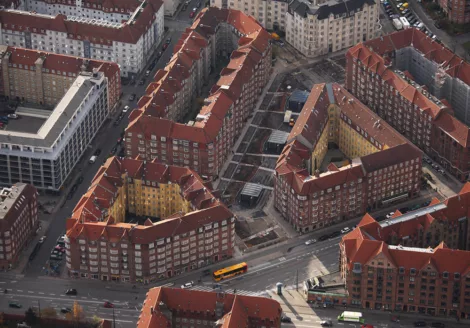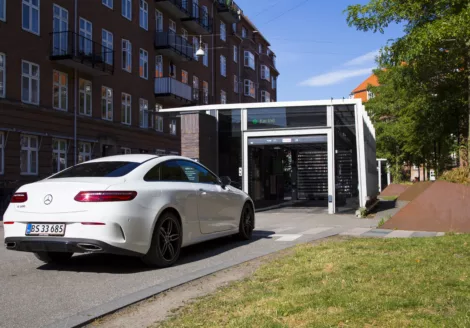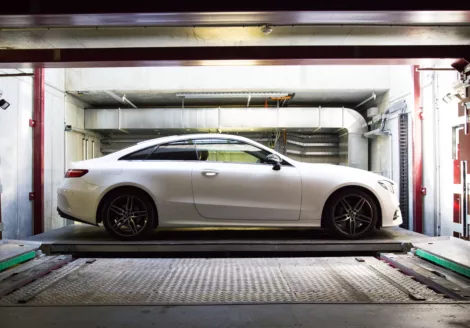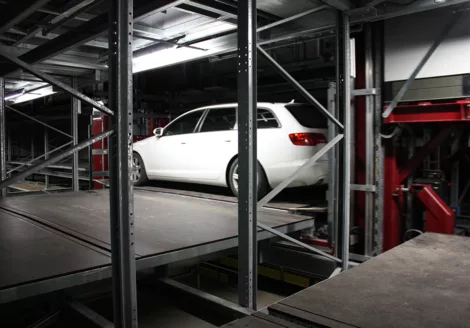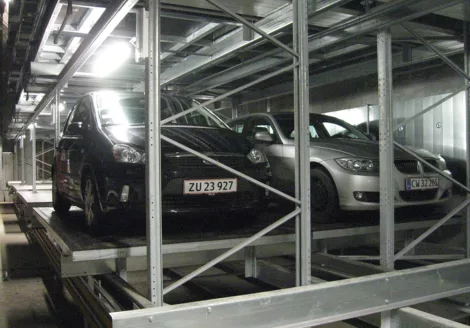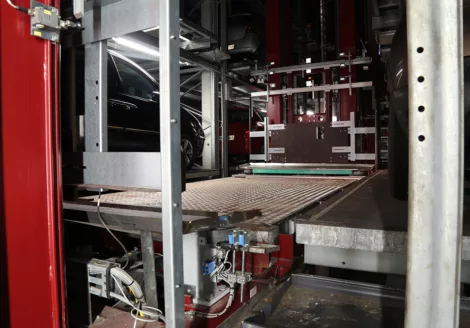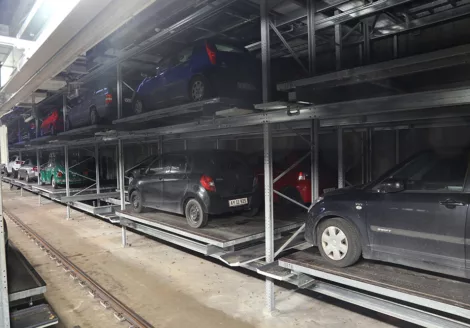268 parking spaces
Under Elmene
Creating more open space and setting design accents together as one
The City of Copenhagen is a pioneer in making its city greener by creating additional outdoor leisure space and an environment with less cars on the city´s streets. With these in mind, the City of Copenhagen chose to implement three automated parking systems within a year after a robust public tender process.
Westfalia's Solution:
The Under Elmene parking garage is perfectly integrated into the Amagerbro district. An architectural highlight is the lighting concept, which beautifully stages the surroundings of the park at night. Once having parked the vehicle in one of the three transfer cabins and having answered the questions on the display system, the vehicle is moved on a lift to be handed over to a crane delivering the vehicle to its allocated storage position. Upon request the crane retrieves the vehicle and delivers it to the lift that transports the vehicle back to the transfer cabin. No matter in which terminal the user wishes to receive his vehicle. The system takes the vehicle to the appropriate transfer cabin.The system is operated by Westfalia´s Savanna.NET® software. The Under Elmene parking garage is equipped with an algorithm counter which documents the frequency of vehicle use. Based on this evaluation, the most used vehicles are placed near the elevators to reduce waiting times for the user to a minimum.
About the Customer:
In various respects Copenhagen is a role model for many of the world’s large cities when it comes to sustainable development. The Danish capital is the world´s first carbon neutral capital.

